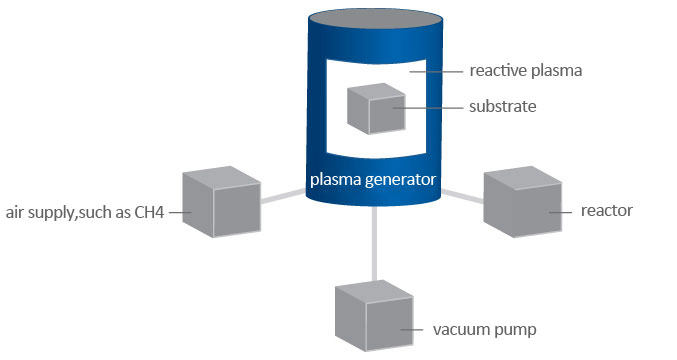
PACVD Coating Technology
PACVD coating is the abbreviation of Plasma Assisted Chemical Vapour Deposition.
What is PACVD Coating Technology?
PACVD coating is the abbreviation of Plasma Assisted Chemical Vapour Deposition.
PECVD Coating Technology
The term PECVD coating is also used; E for Enhanced. Whereas in a PVD coating process the materials are evaporated from a solid form, in PACVD the coating results from a gas phase. In order to build carbon (diamond) coatings, acetylene (C2H2) or for silicium-containing coatings HMDSO (hexa-methyl-disiloxan) can be added. These gasses can be cracked in the plasma to become available for the coating.
DLC coating
An example of a PACVD coating is DLC coating (Diamond Like Carbon). It is used as a tribological coating, e.g. as an engine-coating for automotive components to make the component wear resistant and achieve friction reduction. Or it can be used as a tool coating, due to its anti-sticking properties very suitable for the machining of cast and wrought aluminium and plastic injection moulds.
Process description
Plasma-Assisted Chemical Vapor Deposition (PACVD) activates chemical reactions through plasma excitation and ionization. Using this process, we can achieve deposition at temperatures as low as about 200 °C using pulsed-glow or high‑frequency discharges. Operating at these low temperatures allow the deposition of Diamond-Like Carbon (DLC) layers. DLC layers generated using PACVD are characterized by a low coefficient of friction and a scalable surface hardness.
PACVD and PVD combination
The PACVD process is frequently combined with a Physical Vapor Deposition (PVD) process to facilitate doping of DLC layers and the generation of complex layer architectures.

The principle of PACVD machine technology for the deposition of amorphous carbon layers.
Process basics(PACVD)
|
Coating thickness |
1 – 8µm |
|
Hardness |
1,000 – 3,500HV |
|
Temperature resistance |
350 – 400 °C |
|
Deposition temperature |
180 – 350 °C |
Advantages
High wear resistance
Low coefficient of friction
Corrosion resistance
Even two coated surfaces operating against each provide optimal performance and reliability
Typical applications
Tribological applications
Plastic injection and molding
Optical ndustry